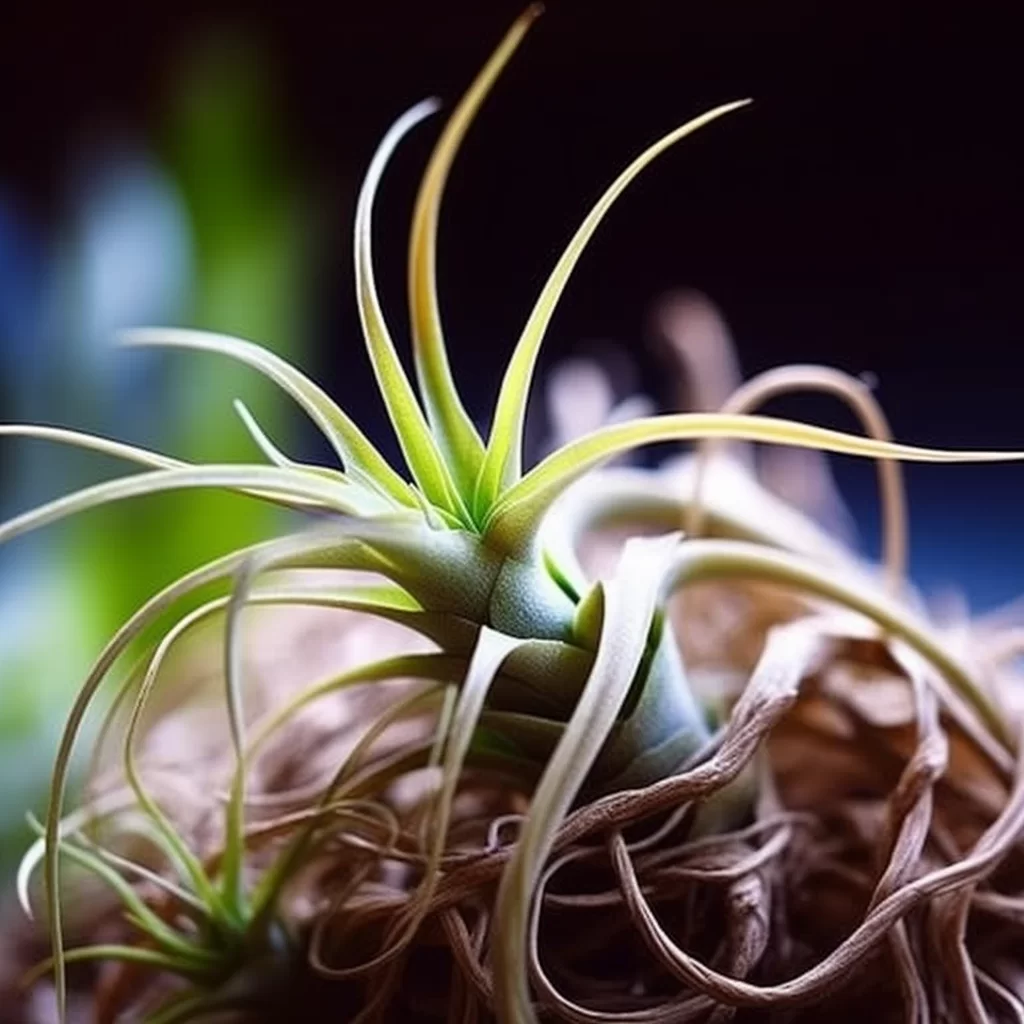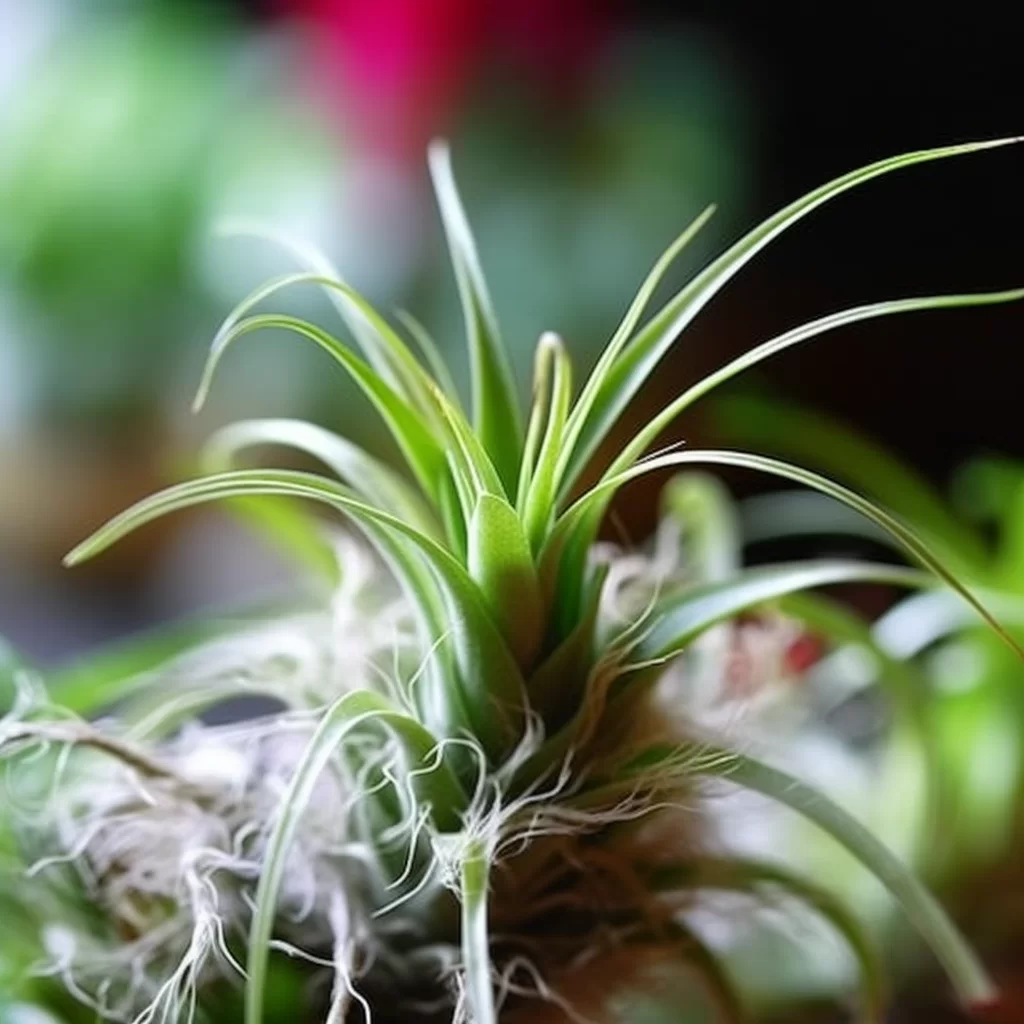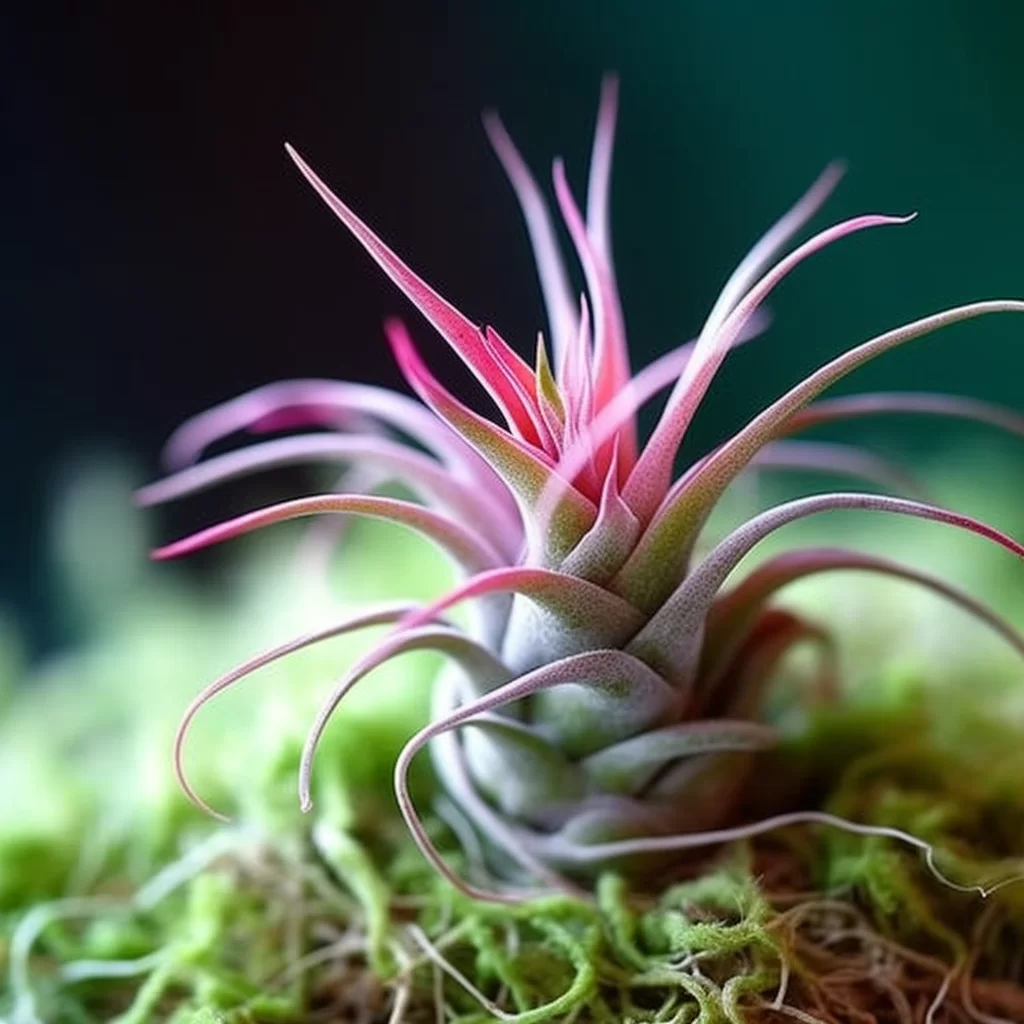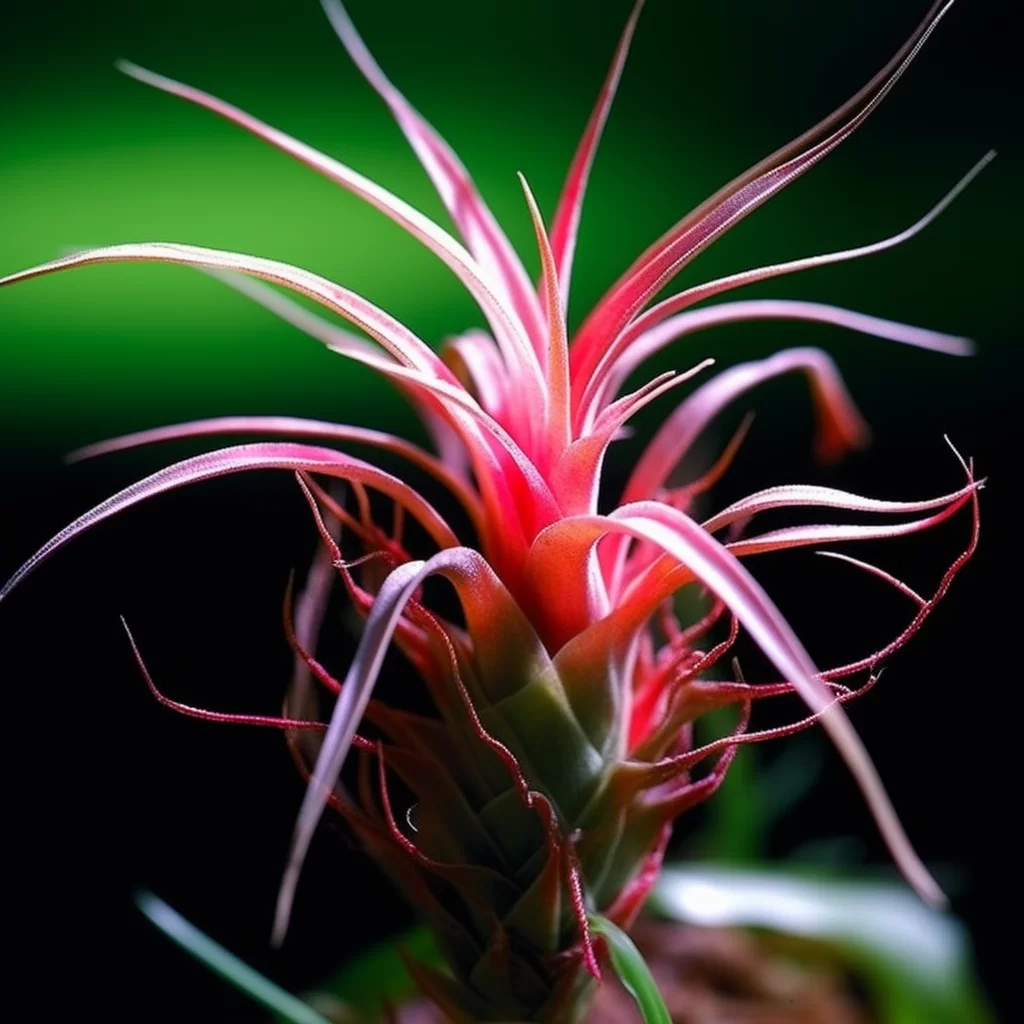Story of Day :
Contents
The Tillandsia Plant: A Complete Guide and Care Tips
If you’re searching for a plant that doesn’t require constant attention and can give your garden a distinct look, the tillandsia plant is ideal for you.
Commonly referred to as “air plants,” these intriguing plants are low-maintenance and come in various shapes and sizes.
They thrive on air and moisture, making them an excellent choice for those who want to add greenery to their space without having to worry about constantly watering or fertilizing them.Tillandsias are perfect if you’re looking for something unique but straightforward to maintain.
You can hang them from walls or place them in small pots, adding an eye-catching element of natural beauty to your home or garden effortlessly.
Plus, with many different varieties available, there’s sure to be one that will suit your personal style perfectly!
What is a Tillandsia Plant?
Tillandsias are fascinating plants that belong to the bromeliad family.
Originating from Central and South America, these plants have a unique way of growing that sets them apart from most other species.
Unlike typical houseplants, tillandsias do not require soil to thrive.
Instead, they absorb water and nutrients through their leaves and can survive in a variety of environments, making them ideal for use in terrariums or hanging baskets. The fact that tillandsias don’t need soil is just one reason why they’re so captivating.
The fact that tillandsias don’t need soil is just one reason why they’re so captivating.
Their ability to absorb nutrients through their leaves makes them incredibly adaptable and versatile when it comes to growing conditions.
Additionally, since they don’t have roots like most other plants, tillandsias can be mounted on a variety of surfaces such as stones or driftwood for an eye-catching display.
These amazing air-purifying plants come in various shapes and sizes with different colors and textures which make them perfect for decorating any space while also providing numerous health benefits such as reducing stress levels by purifying the air around us.
Caring for Your Tillandsia Plant
If you’re looking for an easy-to-maintain plant, a Tillandsia may be the perfect fit for you.
These plants don’t require much attention, making them ideal for anyone who wants to add greenery to their home without committing too much time or effort.
However, it’s important to remember a few key things when caring for your Tillandsia.
For example, these plants need adequate air circulation and should not be over-watered as they absorb moisture through their leaves rather than roots.
Additionally, they thrive in bright but indirect light and can benefit from occasional fertilization.Despite their low-maintenance nature, Tillandsias are fascinating plants with unique characteristics that make them stand out from other houseplants.
Some varieties have interesting shapes or vibrant colors while others bloom with beautiful flowers.
Many species are also epiphytic which means they can grow without soil by attaching themselves to trees or rocks – a special feature that sets them apart from traditional potted plants! While caring for your Tillandsia may require minimal effort compared to other houseplants, learning about its individual needs and quirks can make all the difference in ensuring it thrives and adds beauty to your space.

- Watering: Mist your tillandsias with water once or twice a week.
Make sure they dry completely within four hours after watering to prevent rotting.
- Sunlight: Tillandsias prefer bright, indirect sunlight.
Avoid placing them in direct sunlight as this can scorch their leaves.
- Air Circulation: Good air circulation is important for tillandisas as it helps prevent moisture buildup on their leaves which can cause fungal diseases.
- Fertilizing: Feed your tillandisas once every two months with liquid fertilizer diluted with water.
Tips for Displaying Your Tillandisas
If you’re looking for a unique way to add some greenery to your home, Tillandisas might just be the perfect option for you.
These air plants are great at standing out on their own or when grouped together with other air plants.
There are many ways to display these beauties and make them a conversation starter in any room of your house.
For example, you can hang them from the ceiling or place them on shelves or windowsills.
You can also get creative with the containers that hold these plants – try using glass bowls, seashells, or even driftwood as a rustic base.Tillandisas are versatile and easy-to-care-for plants that will thrive indoors with minimal upkeep required.
They’re ideal for people who don’t have much time to devote to gardening but still want some natural beauty in their surroundings.
By showcasing Tillandsias in unique and interesting ways, you can create an eye-catching display that’s sure to impress anyone who visits your home!
 Tillandisas, also known as air plants, can be displayed in various ways to add a touch of greenery and elegance to any space.
Tillandisas, also known as air plants, can be displayed in various ways to add a touch of greenery and elegance to any space.
One option is to mount them on driftwood or rocks, which gives a natural and rustic feel.
This method is perfect for those who want to create a unique centerpiece or accent piece that blends with the environment.
Another way to showcase tillandisas is by placing them in clear glass globes, creating a modern and sophisticated look.
The transparency of the globe allows the plant’s intricate shapes and textures to stand out while adding some quirkiness.Another popular way is by hanging them together in baskets since it creates an eye-catching display from any angle while conserving space.
Hanging baskets bring life into small spaces such as entryways, office cubicles or kitchens; it’s an excellent option for those who lack enough floor space.
Tillandisas are low-maintenance plants that require little attention when placed indoors; they don’t need soil since their roots absorb water directly from the atmosphere through their leaves pores (trichomes).
Whether you choose one of these options or try something different, displaying Tillandsias can give your home an elegant touch while brightening up even the smallest spaces!
Tillandsia Varieties
Tillandsias, also known as air plants, are a diverse group of plants that come in different shapes, sizes and colors.
Some of the most popular varieties include the T.
Ionantha and T.
Xerographica.
With their unique ability to thrive without soil, these plants offer a low-maintenance option for home gardeners looking to add some greenery to their indoor spaces. The T.
The T.
Ionantha is one of the smallest species of Tillandsia, making it perfect for those with limited space or who prefer smaller houseplants.
Its unique feature is its vibrant red color during blooming season which lasts up to 2 months! On the other hand, T.Xerographica is larger and more dramatic with thick grey leaves that curl inward giving it an attractive rosette shape that looks stunning displayed on its own or paired with other houseplants.
Tillandsias are versatile plants that can be grown in various ways such as mounted on driftwood or nestled in decorative bowls filled with sand or rocks – making them not only easy but fun to grow!
Air plants, also known as Tillandsias, are a type of plant that do not require soil to grow.
They have become increasingly popular in recent years due to their unique appearance and easy care requirements.
Among the most common types of air plants are the Tillandsia Ionantha, Bulbosa and Brachycaulos.The Tillandsia Ionantha is easily recognizable for its striking red leaves that turn bright green when it blooms.
It is highly adaptable and can grow in a variety of environments such as wood, rock or even other plants.
Meanwhile, the Tillandsia Bulbosa has long curly leaves that twist around each other forming swirls making it unique from other air plants.
This plant is native to Central America and Mexico where it can be found growing on tree branches or rocks.
Lastly, the TilLlandsia Brachycaulos boasts spiky silver-green leaves that turn vibrant red during blooming season which adds an attractive feature to any home decor.Overall, these types of air plants are suitable for those who want low maintenance indoor greenery with a unique aesthetic appeal.
With proper care such as occasional misting or soaking in water and indirect sunlight exposure; these versatile beauties can flourish almost anywhere!After analyzing the evidence and examining the key points, it can be concluded that there are a variety of factors at play in this situation.
It is clear that multiple stakeholders have different perspectives and priorities, which can create tension and disagreement.
Additionally, there may be external factors beyond anyone’s control that impact the outcome of this situation.That being said, it is important to approach this situation with open-mindedness and a willingness to collaborate.
By taking a collaborative approach, all parties involved can work together towards finding a resolution that satisfies everyone’s needs to some extent.
This may require compromise on certain issues or creative problem-solving techniques, but ultimately it will lead to a more positive outcome for all involved.
It is also important to remain flexible throughout the process as new information or circumstances arise that could impact the solution reached.
If you’re someone who loves the idea of having lush greenery in your home or garden but hates the thought of maintaining it, the tillandsia plant might be just what you need.
These trendy and captivating plants are easy to care for and require very little attention.
However, they make a bold statement with their intricate shapes and vibrant colors that are sure to brighten up any space.These plants are perfect for those who have busy lifestyles or live in areas where outdoor gardening is not feasible.
They can survive in various indoor environments as long as they receive adequate light, air circulation, and moisture.
With just a little bit of effort on your part, these fascinating specimens can bring joy and life into your home or garden year after year!